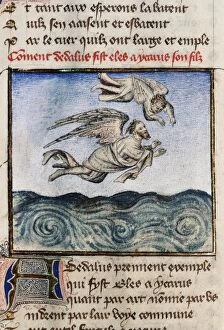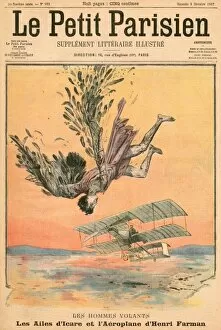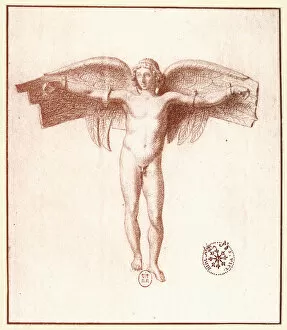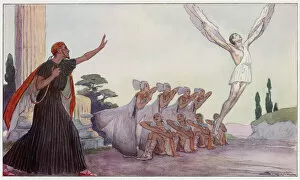Icarus Collection (page 4)
"Icarus and Daedalus: A Mythical Tale of Ambition and Consequences" In the realm of Greek mythology
All Professionally Made to Order for Quick Shipping
"Icarus and Daedalus: A Mythical Tale of Ambition and Consequences" In the realm of Greek mythology, the story and Daedalus has captivated generations with its cautionary tale. Illustrated through various artistic renditions, such as "Icarus by Richmond" or "The Fall of Icarus" by Peter Paul Rubens, this myth continues to resonate. Daedalus, a skilled craftsman, constructed wings made of feathers and wax for himself and his son Icarus. As they soared high above the world in their audacious flight, it was a sight to behold - captured beautifully in Hendrik Goltzius' masterpiece "Icarus, from The Four Disgracers. " However, hubris got the better of young Icarus. Rubens' oil sketch portrays the tragic moment when Icarus flew too close to the sun. The wax holding his wings melted under its scorching heat. Carlo Saraceni's painting further immortalizes this fateful event on copper canvas. It serves as a reminder that even great ambition can lead to devastating consequences if not tempered with wisdom. "The Lament for Icarus, " depicted in vivid color lithography, showcases how humanity mourns over our own self-inflicted downfalls. Sir William Blake Richmond's line engraving from 1887 captures both the beauty and tragedy within this timeless tale. Even Albrecht Durer recognized the significance of this myth back in 1493 when he created his iconic artwork titled "Icarus. " This portrayal emphasizes how one's fall from grace can be witnessed by all who inhabit nature's landscapes. Joos de Momper's landscape painting encapsulates an eerie tranquility as it depicts Ikaros' fall amidst an idyllic scenery – reminding us that life goes on despite our personal tragedies. The legend lives on through these captivating illustrations.














